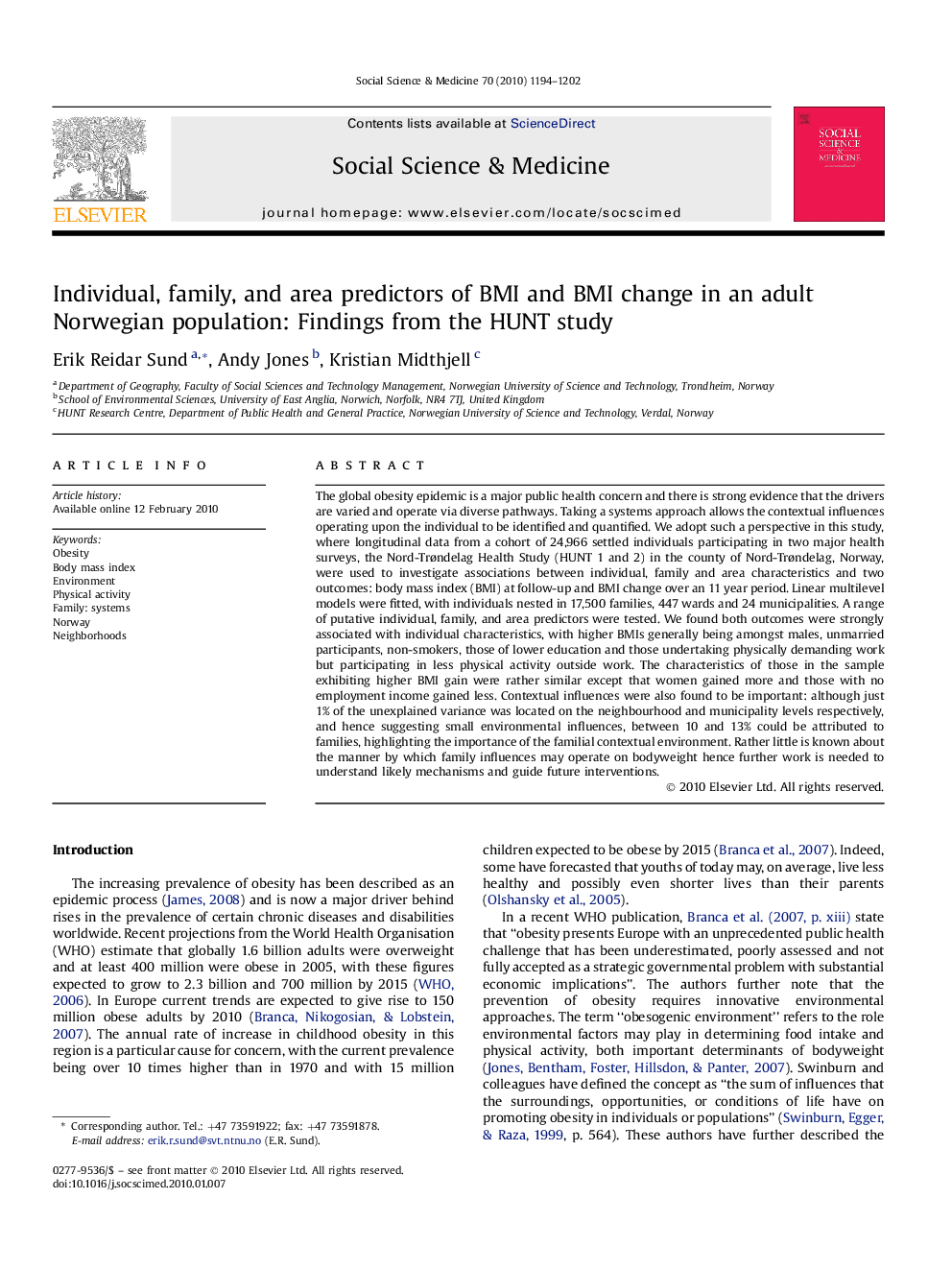| کد مقاله | کد نشریه | سال انتشار | مقاله انگلیسی | نسخه تمام متن |
|---|---|---|---|---|
| 10472033 | 927571 | 2010 | 9 صفحه PDF | دانلود رایگان |
عنوان انگلیسی مقاله ISI
Individual, family, and area predictors of BMI and BMI change in an adult Norwegian population: Findings from the HUNT study
دانلود مقاله + سفارش ترجمه
دانلود مقاله ISI انگلیسی
رایگان برای ایرانیان
کلمات کلیدی
موضوعات مرتبط
علوم پزشکی و سلامت
پزشکی و دندانپزشکی
سیاست های بهداشت و سلامت عمومی
پیش نمایش صفحه اول مقاله

چکیده انگلیسی
The global obesity epidemic is a major public health concern and there is strong evidence that the drivers are varied and operate via diverse pathways. Taking a systems approach allows the contextual influences operating upon the individual to be identified and quantified. We adopt such a perspective in this study, where longitudinal data from a cohort of 24,966 settled individuals participating in two major health surveys, the Nord-Trøndelag Health Study (HUNT 1 and 2) in the county of Nord-Trøndelag, Norway, were used to investigate associations between individual, family and area characteristics and two outcomes: body mass index (BMI) at follow-up and BMI change over an 11 year period. Linear multilevel models were fitted, with individuals nested in 17,500 families, 447 wards and 24 municipalities. A range of putative individual, family, and area predictors were tested. We found both outcomes were strongly associated with individual characteristics, with higher BMIs generally being amongst males, unmarried participants, non-smokers, those of lower education and those undertaking physically demanding work but participating in less physical activity outside work. The characteristics of those in the sample exhibiting higher BMI gain were rather similar except that women gained more and those with no employment income gained less. Contextual influences were also found to be important: although just 1% of the unexplained variance was located on the neighbourhood and municipality levels respectively, and hence suggesting small environmental influences, between 10 and 13% could be attributed to families, highlighting the importance of the familial contextual environment. Rather little is known about the manner by which family influences may operate on bodyweight hence further work is needed to understand likely mechanisms and guide future interventions.
ناشر
Database: Elsevier - ScienceDirect (ساینس دایرکت)
Journal: Social Science & Medicine - Volume 70, Issue 8, April 2010, Pages 1194-1202
Journal: Social Science & Medicine - Volume 70, Issue 8, April 2010, Pages 1194-1202
نویسندگان
Erik Reidar Sund, Andy Jones, Kristian Midthjell,